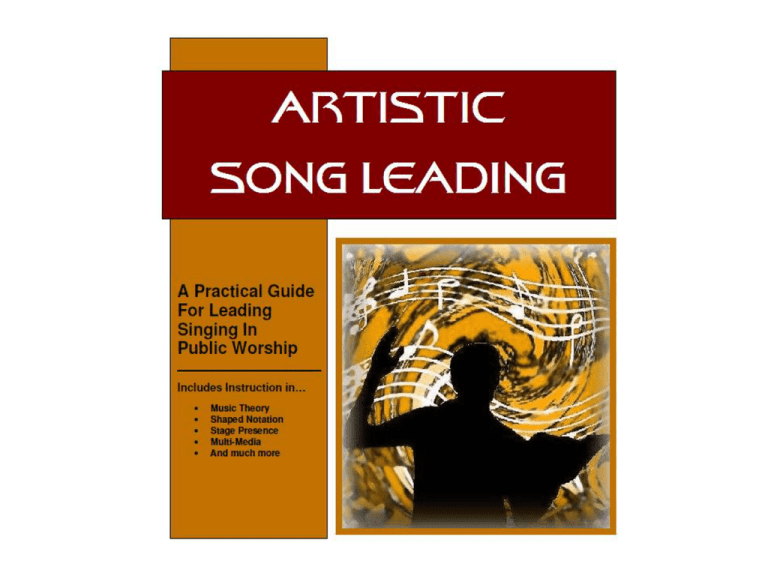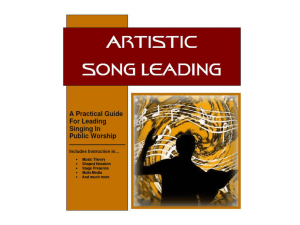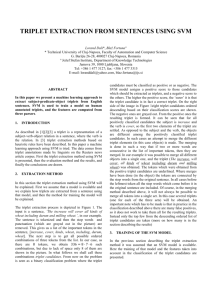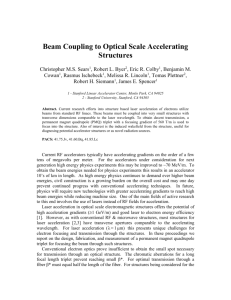Artistic Song Leading (Lesson 4)
advertisement

Artistic Song Leading Lesson 4 Copyright 2010 by Jimmy Bagwell As part of the “ARTISTIC SONG LEADING” Series Artistic Song Leading (Lesson 4) Ledger Lines are additional lines used to extend the range of the staff. Artistic Song Leading (Lesson 4) Ledger Lines are additional lines used to extend the range of the staff. Notes on ledger lines (and spaces) above the staff in treble clef Artistic Song Leading (Lesson 4) Ledger Lines are additional lines used to extend the range of the staff. Notes on ledger lines (and spaces) above the staff in treble clef Notes on ledger lines (and spaces) below the staff in treble clef Artistic Song Leading (Lesson 4) Notes on ledger lines (and spaces) below the staff in bass clef Artistic Song Leading (Lesson 4) Notes on ledger lines (and spaces) below the staff in bass clef Notes on ledger lines (and spaces) above the staff in bass clef Artistic Song Leading (Lesson 4) KEY SIGNATURE: Key signatures are placed at the beginning of each staff, between the clef and the meter signature: Artistic Song Leading (Lesson 4) Scales with sharps in their key signatures are the following: Artistic Song Leading (Lesson 4) Scales with flats in their key signatures are the following: Artistic Song Leading (Lesson 4) The circle of fifths depicts the relationships among the 12 pitch classes comprising the familiar chromatic scale. Artistic Song Leading TRIPLET (Lesson 4) The TRIPLET consists of three notes and all three notes get performed on ONE BEAT. Artistic Song Leading (Lesson 4) TRIPLET The TRIPLET consists of three notes and all three notes get performed on ONE BEAT. Example 1: contains two measures with triplets and rests in each measure. The Time Signature is 4/4...which means 4 beats to the measure and the quarter note (and each TRIPLET) gets one beat. Artistic Song Leading (Lesson 4) TRIPLET The TRIPLET consists of three notes and all three notes get performed on ONE BEAT. Example 1: contains two measures with triplets and rests in each measure. The Time Signature is 4/4...which means 4 beats to the measure and the quarter note (and each TRIPLET) gets one beat. Example 2: contains two measures with triplets and rests in each measure. The Time Signature is 4/4 ...which means 4 beats to the measure and each TRIPLET gets one beat. In this example you will see that the TRIPLET notes are not all on the same pitch. TRIPLETS can (and often are) different pitch tones.











